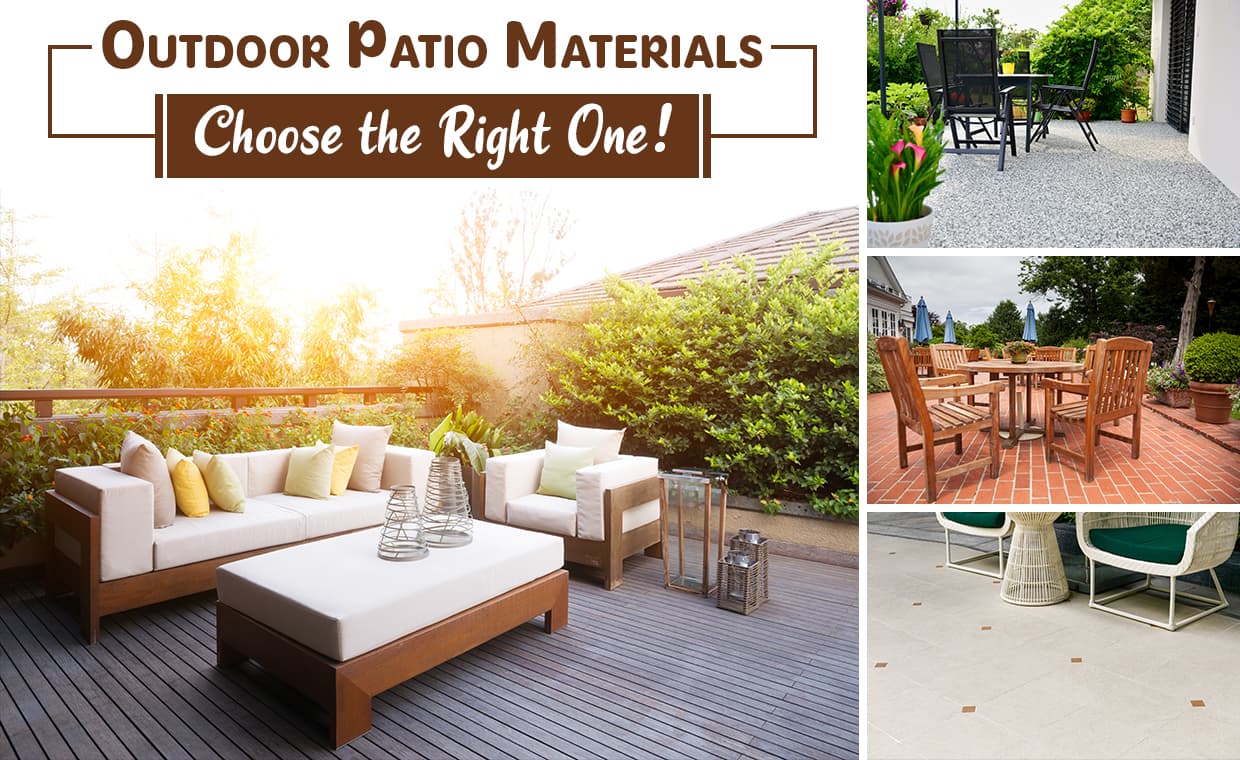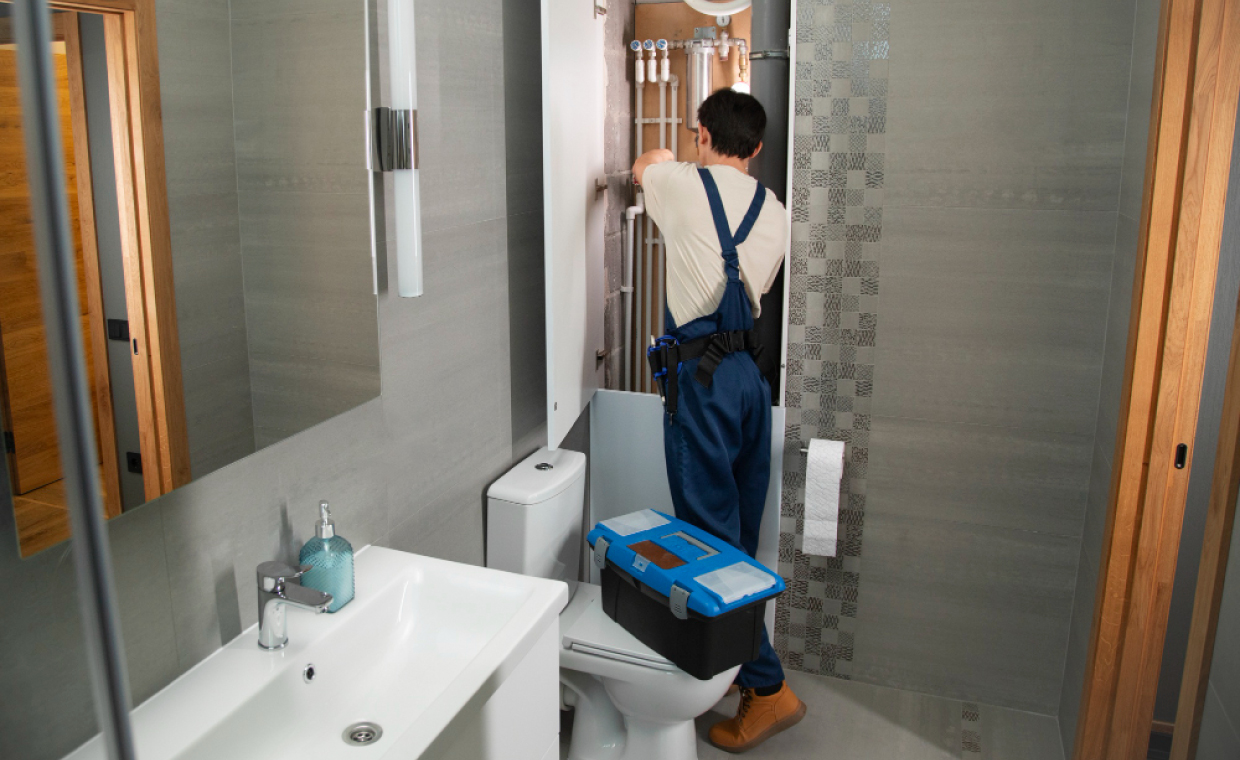
Many homeowners nowadays are more interested in getting most of their living space past the home’s interior. A study by The American Institute of Architects’ Home Design Trend Survey found that more than two-thirds of those surveyed had used their outdoor spaces. An outdoor patio is one way to create an excellent outdoor living space for you and your family. Patios are usually the same level as the ground. Unlike decks, patios aren’t raised.
Patios are used for many activities, such as a grill-out location during summer, a playground for kids, or a bonfire activity in late fall. It’s also an important area of your yard that completes your home decor while adding value to your property.
Outdoor Patio Materials
Patios are made from basic materials. How you design these materials gives your outdoor space a great impression. The materials you choose will be determined by the patio’s location, your preference, the size of the patio, your budget, and what’s available in your locality.
01. Timber Patio

Timber is among the best outdoor patio materials. They’re realistic and stylish. Before, most homeowners preferred using hardwood for outdoor decking. However, this has changed since many timber options for outdoor spaces exist.

For instance, you can opt for the Wood-Plastic Composite (WPC) floor instead of traditional timbers. WPC is made from recycled plastic and wood mixture, making it rot-resistant. This material is waterproof, durable, and requires low maintenance. If you’re convinced that timber is the perfect material for your patio, you might need to check out timbertech to know which options you have and how much they cost.
02. Concrete Patio

There’s nothing more adaptable and versatile than a concrete patio floor. Concrete is a recipe that combines gravel, sand, cement, and water that hardens when dry. Its semi-liquid nature allows it to be designed into any shape or size. Versatility gives owners the free will to be creative with their patios. Concrete patios can be smooth, brushed, stamped, scored, tinted, colored, patterned, decorated with inlays, or surfaced with other materials like pebbles. Concrete is also economical as it’s durable and easy to maintain.
However, concrete has a few drawbacks, such as challenges in mixing the material since the process must be done in a particular way for the best results. Also, if the concrete is not dried correctly or has drainage issues, it can develop cracks in the future. On the other hand, when the concrete is very smooth, it can be slippery when wet. Concrete may also not be ideal for your patio if it’s over electrical lines or sewer due to frequent maintenance.
03. Natural Stone or Flagstone Patio

Stone is a perfect option for your patio. Local stone is mainly recommended because it’s more environmentally friendly and more likely to blend into different backyards. Types of natural stone are sandstone, quartzite, bluestone, slate, and limestone. Natural stones are available in different colors depending on the location. They also have a roughened surface, which gives excellent traction when wet.
The stones need to be at least 11/2 inches thick for patio flooring and be laid directly on a bed, soil, or sand. Thinner stones can also be used but must be placed on concrete or wet mortar to avoid cracking. Natural stone lasts longer, is easy to maintain, and maintains its color longer than any other material. However, natural stone costs more since it must be quarried and transported to the market. It’s also expensive to install as it takes longer to lay down and level.
04. Brick Patio

Brick has been a popular home construction material for centuries. However, bricks used for patios are different from those used in your home as they must be specifically fired to be less porous. Bricks vary depending on the environment, so ensure to choose the correct grade for your location. Bricks are sturdy, last longer, and give a classic look with many styles and designs.
Bricks are versatile, meaning they can be used on patio floors, walls, pathways, and edging. They are suitable for formal and rustic landscape or hardscape features and home designs. Brick patterns or bonds portray different unique looks. The common patterns are running bond, jack-on-jack, pinwheel, alternating bricks on a 90 degrees angle, and herringbone.
Bricks offer natural warmth and formal elegance, but they have some disadvantages. Bricks are porous, meaning they retain moisture. In freezing areas, bricks are more prone to cracking. Also, if installed on sand instead of mortar, weeds can grow between them, thus affecting your patio’s appearance. In the shady area, slippery moss grows on the bricks, and this can cause accidents. Finally, they’re more expensive compared to concrete.
05. Tiles Patio

Ceramic or porcelain tiles can design a unique patio. Tiles have various colors and styles and can create a great outdoor living space. Although these tiles may resemble the tiles on your kitchen or bathroom floors, use tiles and grout meant for outdoor use. It’s also essential to use tiles that aren’t very porous or will not infiltrate a lot of water to avoid damage from thawing and freezing as seasons change. Also, settle for unglazed tiles for large walking spaces as they aren’t slippery like the glazed tiles.
There are three kinds of unglazed tiles for patio surfaces: Terracotta, Porcelain, and Quarry.
You can use sealers, coatings, or enhancers to protect your outdoor tiles from wear, stains, and water while retaining their original color.
However, tiles do have some potential drawbacks. For instance, when they’re wet, they become slippery and might cause severe falls. Even the unglazed tiles, which appear rough, when exposed to water for a long time, promote the growth of slippery moss, making the floor unsafe. Lastly, tiles tend to be more expensive than bricks and concrete.
06. Concrete Pavers Patio

Concrete pavers are designed from dense concrete compacted to form individual units that resemble brick or natural stone. Concrete pavers come in different colors and shapes. Since pavers are laid individually, replacing the damaged ones is easy without interfering with the rest of the patio. When installed on the sand, they can withstand temperature changes making them shift instead of cracking.
However, they have some drawbacks as well. Due to their geometric designs, they’ve limited freedom in their patterns. Also, their shallow pigments can fade over time, thus revealing the bare concrete beneath.
Conclusion
Outdoor patios can be a great way to use the exterior section of your home. When choosing outdoor patio materials, consider the ones listed above when selecting the perfect material for your patio.
Now you have known about patio materials, if you want to know about patio plants, then we have written detail blog on it, refer the following link:
16 Best Patio Plants to Add Colour to the Space
Image Courtesy: Image 3






























